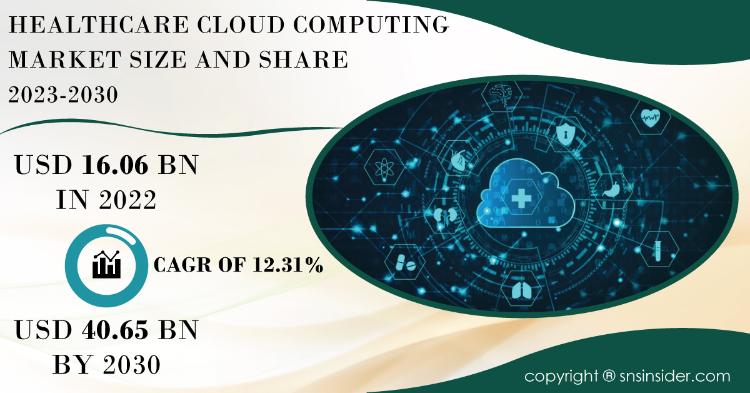Healthcare Cloud Computing Market SWOT Analysis | Strategic Positioning Insights
Healthcare Cloud Computing Market SWOT Analysis | Strategic Positioning Insights
|
Healthcare Cloud Computing Market Report Scope and Overview Amidst a backdrop of global uncertainties and evolving market dynamics, the unveiling of the Healthcare Cloud Computing Market Report signifies a pivotal moment for stakeholders seeking strategic insights and actionable recommendations. This comprehensive report offers a deep dive into the Healthcare Cloud Computing Market, providing invaluable insights into market trends, competitive analysis, regional outlook, and the impact of significant geopolitical and economic events. As businesses navigate through challenges and seek avenues for growth, the Healthcare Cloud Computing Market Report serves as a beacon of guidance, empowering stakeholders to make informed decisions and chart a course towards sustainable success in the Healthcare Cloud Computing Market. In the era of digital health and patient-centric care, the Healthcare Cloud Computing Market emerges as the strategic imperative for healthcare organizations seeking to improve access to medical information, enhance collaboration, and accelerate innovation through cloud-based technologies. With the proliferation of electronic health records (EHRs), telemedicine, and medical imaging, healthcare providers leverage cloud computing solutions to store, analyze, and share patient data securely and efficiently across distributed environments. By providing scalable infrastructure, data analytics, and interoperability capabilities, healthcare cloud computing solutions enable organizations to streamline clinical workflows, reduce IT complexity, and deliver personalized, data-driven care that improves patient outcomes and lowers costs. As healthcare organizations embrace digital transformation initiatives and seek to harness the power of technology to address the evolving needs of patients and providers, the Healthcare Cloud Computing Market becomes the strategic enabler for building a connected, patient-centric healthcare ecosystem that drives innovation and improves health outcomes. Get a Sample Report of Healthcare Cloud Computing Market @ https://www.snsinsider.com/sample-request/2205 
Competitive Analysis The Healthcare Cloud Computing Market Report conducts a rigorous competitive analysis, illuminating key players, their strategies, and market positioning. Through meticulous research and analysis, the report unveils the strengths and weaknesses of market incumbents, enabling businesses to identify opportunities for differentiation and strategic partnerships. By offering insights into competitor behavior and market trends, stakeholders can refine their strategies, enhance their offerings, and gain a competitive edge in the dynamic Healthcare Cloud Computing Market. Some of the Major Key Players Studied in this Report are:
Regional Outlook Spanning across geographies, the Healthcare Cloud Computing Market Report provides a comprehensive regional outlook, shedding light on unique market dynamics and growth prospects in different regions. From North America to Asia-Pacific, each region presents distinct opportunities and challenges for market players. By delving into factors such as regulatory frameworks, consumer preferences, and economic indicators, the report offers actionable insights for businesses seeking to capitalize on regional opportunities and expand their footprint in the global Healthcare Cloud Computing Market. Market Segmentation and Sub-Segmentation Included Are: By Service
By Application
By Cloud deployment model
By End-users
Impact of the Russia-Ukraine War The Healthcare Cloud Computing Market Report meticulously analyzes the impact of the Russia-Ukraine war on market dynamics, supply chains, and consumer sentiments. Geopolitical tensions and disruptions in trade routes have reverberated throughout the global economy, influencing consumer confidence and investment decisions. By forecasting the ripple effects of the conflict on key industries and market sectors, the report equips stakeholders with strategies to mitigate risks and capitalize on emerging opportunities amidst geopolitical uncertainties. Impact of the Recession Amidst economic downturns and market volatility, the Healthcare Cloud Computing Market Report examines the impact of the recession on consumer spending patterns, market demand, and investment sentiments. The economic fallout from the recession has led to shifts in consumer behavior and purchasing habits, posing challenges for businesses across various sectors. By identifying areas of resilience and opportunities for innovation, the report empowers stakeholders to adapt their strategies, optimize resource allocation, and navigate through economic uncertainties towards sustainable growth in the Healthcare Cloud Computing Market. Get a Discount @ https://www.snsinsider.com/discount/2205 Key Objectives of the Report The Healthcare Cloud Computing Market Report aims to achieve several key objectives:
Conclusion In conclusion, the Healthcare Cloud Computing Market Report serves as a valuable resource for stakeholders seeking to navigate through complexities and drive strategic growth in the market. From unraveling the competitive landscape to deciphering regional dynamics and the impact of global events, the report offers actionable insights and strategic recommendations for businesses to thrive in the dynamic Healthcare Cloud Computing Market. By leveraging insights from the report, stakeholders can make informed decisions, capitalize on emerging opportunities, and chart a course towards sustainable growth and success amidst challenges and uncertainties. Table of Contents- Major Key Points
Bethany Stewart
Information & Communication Technology Research Associate |
| Free forum by Nabble | Edit this page |

